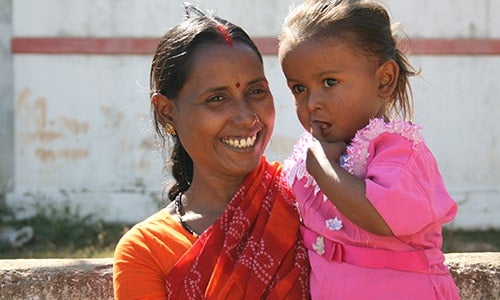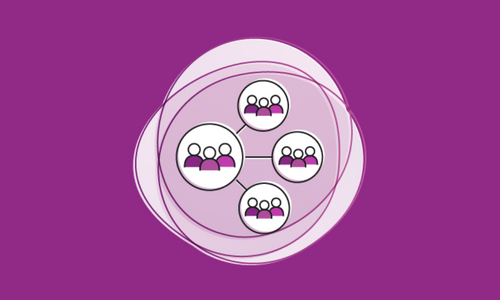What’s documentation got to do with it? Examining the evidence on scale-up of social norms interventions for adolescent and youth reproductive health

Originally published on FHI 360’s R&E Search for Evidence blog.
The Learning Collaborative to Advance Normative Change is a network of experts committed to facilitating collaboration between organizations and individuals working on adolescent and youth norms-shifting interventions. Members are working collectively to build knowledge and tools to promote and guide effective social norm theory, measurement, and practice. In addition to our blog series to clarify some of the key concepts in social norms work, we’ll be posting blogs by Learning Collaborative members.
It should come as no surprise that adolescent and youth reproductive health (AYRH) outcomes are heavily influenced by factors beyond individual control. Increasingly, therefore, public health interventions designed to support healthy AYRH behaviors are looking beyond individual-level factors and seeking to change social norms. For example, a prevalent social norm in many countries is that girls should leave school, get married and have children early. An intervention that seeks to shift or replace these norms with norms that value gender equity and girls’ education (i.e., normative change) may enable girls to delay marriage and childbearing.
While evidence of the effectiveness of these interventions is growing (ALIGN, 2019), understanding how to achieve scale-up to reach a larger population and thus achieve wider impact remains quite limited. As part of the Passages Project, we worked with colleagues at Save the Children and the Institute for Reproductive Health to analyze peer-reviewed and grey literature that describes AYRH interventions with community-based normative change components that have scaled-up in low- and middle-income countries. We learned that scaling up multifaceted normative change interventions is possible, but better evidence is needed to guide the process.
In this post, we outline the methodology and main findings from this exploratory literature review. The full review, “Scaling-up normative change interventions for adolescent and youth reproductive health: An examination of the evidence” is included in a special supplement of the Journal of Adolescent Health focused on advancing social norms practice for AYRH. The supplement is funded by the Bill & Melinda Gates Foundation.
Methodology
We used a combination of terms from three main domains – normative change, scale-up and AYRH interventions – to search relevant literature spanning 17 years (2000–2017) from Google Scholar, ScienceDirect and JSTOR. Figure 1 in the paper shows our full review process. Documentation included during our review had to describe: interventions with a focus on AYRH outcomes; interventions with normative change activities or components; and either the intervention’s efforts to scale-up or the results achieved from scale-up activities. The ExpandNet scale-up framework guided our conceptual understanding of scale-up. After applying all our review criteria, we included only 13 community-based normative change projects in the final review.
We then searched project websites between February 2017 and April 2017 to identify additional scale-up documentation on these projects. As a team, we reviewed the available literature and reached consensus on common themes.
We analyzed the documentation from both searches to identify: common characteristics of normative change interventions that achieved scale-up; scale-up processes employed; and factors that facilitated or inhibited scale-up. We originally intended to document intervention components that contributed to normative change and how these specific components achieved scale-up. However, we found the documentation unclear as to which components explicitly contributed to normative change outcomes. Additionally, we discovered it’s unlikely that any one component acts in isolation of other components. Consequently, our analysis was not able to document characteristics that can be directly attributed to normative change components. Instead we document characteristics of and scale-up processes employed by interventions that include normative change components.
Findings
Despite the limited amount of information, we find that scale-up typically is achieved through employment of multiple scale-up strategies and that four overarching factors facilitate or inhibit scale-up processes: 1) monitoring data, 2) intervention design, 3) substantive community and government-sector partnerships, and 4) the availability of financial and human resources. Here we break down these factors.
First, about half of the interventions mention that the use of monitoring and evaluation systems is important for guiding scale-up efforts. When scale-up involves cross-organizational monitoring, it is useful for multiple organizations to share core indicators. Often, however, monitoring systems developed for pilot implementation need to be adapted or simplified to accommodate new contexts and organizational systems during scale-up. Monitoring and evaluation guidance documents and tools, combined with capacity building of user organizations, are identified as critical supports to maintain fidelity of the core normative change components during scale-up.
Second, we find that many of the interventions cite designing the intervention with the end in mind (i.e., planning for scale-up at the outset) as a critical factor in their success for later expansion and institutionalization. Some projects developed a strategic scale-up plan at an early stage in project implementation. Other projects budgeted capacity-building activities to train local organizations to independently implement the interventions over time. Still others noted that developing easily adaptable project activities and materials facilitated subsequent scale-up.
Third, we find the most frequently mentioned facilitators of scale-up are partnerships with and support from community groups and government stakeholders. Some of the interventions sought to ensure stakeholder buy-in through advocacy and early engagement. Others incorporated measures to align intervention components with government policies, systems or NGO platforms so that the interventions could be easily integrated into existing programs.
Finally, the findings show the need for human and financial resources is the biggest challenge to scale-up and the challenge that is most affected by the normative change components of the intervention. For instance, unique to normative change interventions, several of the interventions mentioned an additional human resource need critical to achieving success – working with staff to identify and clarify their own norms and roles as change agents. Additionally, the timeframe for reaching tipping points and demonstrating effectiveness of normative change efforts is likely to require longer than the standard three- to five-year timeframes of most health-focused projects since changing social norms requires changing the beliefs of many individuals.
Implications
The few interventions included in this review and the scant documentation of scale-up processes highlight the need for more research and evaluation, as well as better articulation and documentation of scale-up of normative change interventions and lessons learned. Despite the need for more evidence, the insights gleaned from our review are not dissimilar from findings on factors that facilitate scale-up in other types of health interventions. Our review can also provide some key insights on the distinct challenges inherent in scaling up programs designed to shift social norms. As such, our findings provide an important starting point to inform future normative change programming for AYRH as well as have broad applicability for incorporating normative change programming into other health sectors.
Greater shared learning across the many organizations that are implementing and scaling up normative change interventions is needed to improve measurement and analysis of normative change and its scale-up and ultimately ensure sustained impact of these initiatives.
To join the Learning Collaborative, or if you are interested in having a blog post featured as part of our series, please contact Cait Davin (cait.davin@georgetown.edu).
 Where We Work
Where We Work  Press Room
Press Room  FACT Project
FACT Project  Passages Project
Passages Project  Learning Collaborative
Learning Collaborative  Search All Resources
Search All Resources  Social Norms
Social Norms  Fertility Awareness Methods
Fertility Awareness Methods